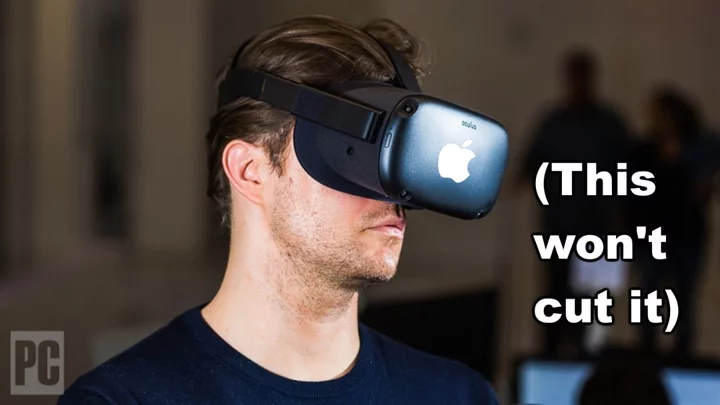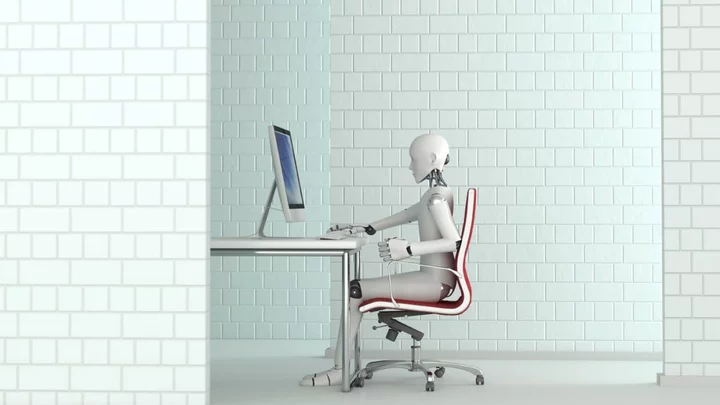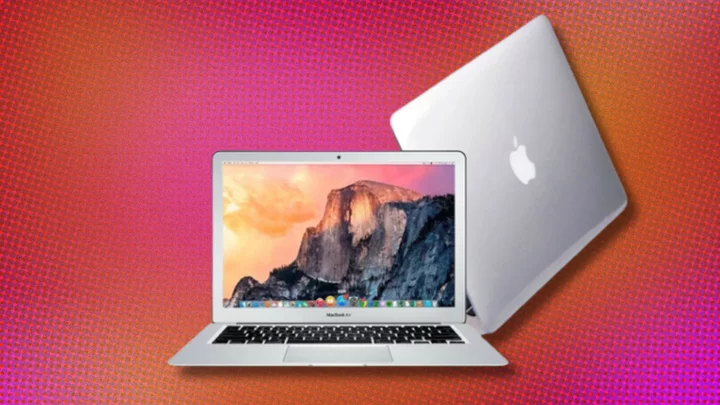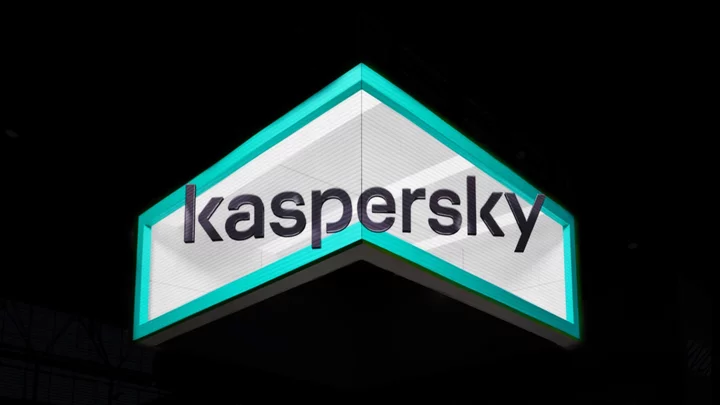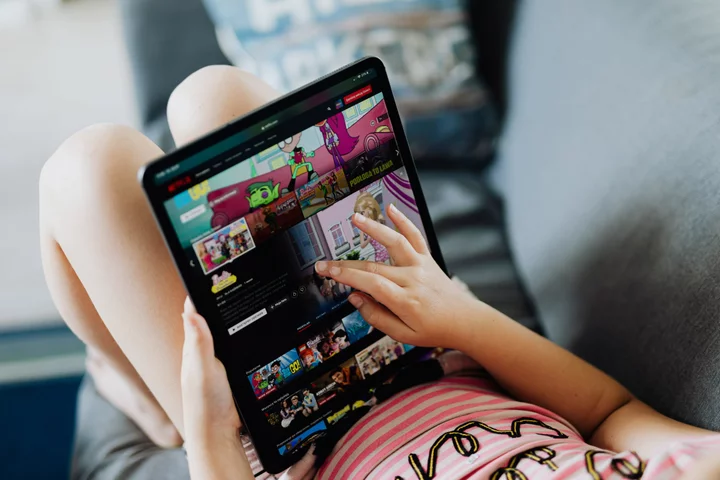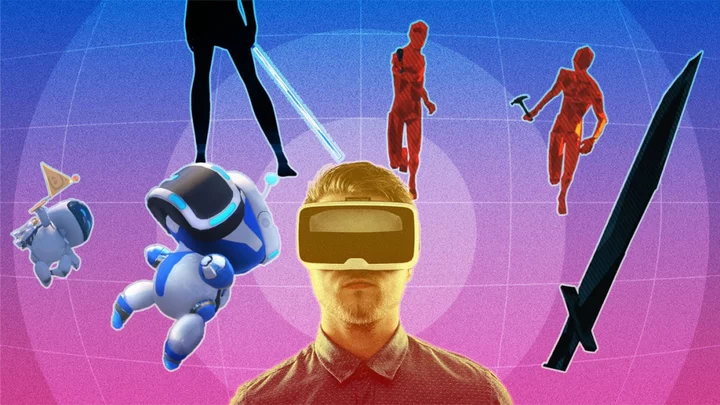After years of rumors, Apple might finally be announcing its long-awaited VR headset at next week's WWDC. While its presence at the conference hasn't been confirmed, we saw several rumors a few months ago, courtesy of Bloomberg's Mark Gurman, regarding the head-mounted display and its features. It looks like it will be able to run iPad apps, have an external battery pack, and include hand control, eye control, and Siri.
One of the most recent rumors, from Ross Young at Display Supply Chain Consultants, claims the headset will use 1.41-inch OLED panels providing 4K resolution per eye (4000ppi), with a peak brightness of 5,000 nits. That last part is a bit questionable, since high-end phone displays usually reach 1,000 to 1,500 nits and the brightest TVs reach around 2,000 nits, but we'll see if those details pan out.
Whether all or some of the rumors are true, it sounds like Apple will be unveiling a powerful headset with a reportedly hefty $3,000 price tag. Word suggests the second-gen version may be more affordable which may help it compete against the Meta Quest 2, Quest Pro, and PlayStation VR2. But Apple's biggest hurdle isn't beating Meta and Sony. It's making its yet-to-be-announced VR ecosystem attractive to consumers who don't actually care about VR yet.
The Quest 2 and PS VR2 are both excellent headsets from a technical standpoint. With powerful hardware, relatively comfortable designs, and plenty of software, they check most of the boxes. So why has VR success been so hard to turn into reality?
VR Isn't in the Best Place Right Now
After purchasing, incorporating, and rebranding Oculus for the metaverse, Meta carved out a strong niche for its VR headsets. According to The Verge, Meta has sold 20 million headsets so far. That sounds impressive, but it covers a four-year period from the launch of the original Quest to the newer Meta Quest Pro. For comparison, the PlayStation 5 has sold 32 million units and the Nintendo Switch has topped 122 million consoles sold so far.
PlayStation VR2Of course, game consoles aren't the same thing as VR headsets, and the scales of adoption might not match. That's a big problem for VR adoption, though. Game consoles are luxury items for many, while Meta has been pushing VR and mixed reality as a vital technology for both entertainment and work.
So it's perhaps not fair to compare Meta headset sales with game console sales in terms of what Meta expects out of the category. It's more appropriate to compare them with smartphone sales. And that means looking at $71 billion in iPhone sales for 2022—that's just iPhones, not all smartphones.
VR and MR headsets don't have a shot of getting close to that any time soon, and the trends right now are shaky at best. Meta CEO Mark Zuckerberg spent $10 billion pushing the technology in 2021, and all it has to show at this point is mass layoffs. Sony is reportedly unhappy about the PS VR2's sales, too; it's reportedly sold only 270,000 units while Sony expected to sell 2 million during the launch window.
To be fair, Zuckerberg has been tempering outward expectations in VR significantly, telling The Verge in an interview last October: "It’s not like this stuff is going to be fully mature in a year or even two or three years. It’s going to take a long time to build out the next computing platform." On the one hand, he's looking at VR with long-term optimism. On the other hand, that optimism includes making VR the "next computing platform."
Meta VR interfaceZuckerberg wants VR headsets to become the new smartphones. That's where Apple has to come in, not to simply sell more headsets than Meta or Sony, but to do for VR headsets what it did for smartphones. And tablets. And smartwatches.
The Apple Effect
Smartphones existed for some time before the iPhone, but they were largely business devices, with BlackBerry phones, in particular, standing out as some of the most popular because of what they could do for work. Outside of that context, smartphones were awkward to use and seen as expensive devices not intended for most consumers.
That changed when Apple released the iPhone in 2007, actively marketing the phone to, well, everyone. And it introduced a big, friendly, and simple design loaded with appealing features to hammer that point home. Then Apple introduced the App Store for the iPhone, and within a couple of years it became one of the biggest names in the category.
Apple did the same thing for tablets in 2010 with the iPad and smartwatches in 2015 with the Apple Watch. They were huge jumps—not necessarily in the technology used, but in how that technology was implemented and, most importantly, how it could appeal to a broad market.
iPhone 14, one of the most popular phones of the last year.Apple needs to do the same with its VR headset. Making a device better than the Meta Quest Pro or PS VR2 isn't enough. Apple needs to release a headset that a huge part of the public can look at and say, "Oh, I get it now! That's how VR can be used!" It needs to cause the same mass-market revelation that the iPhone, iPad, and Apple Watch did.
How, Exactly?
How Apple can do that is its own question and one that's squarely in the realm of pure speculation. Apple didn't simply make powerful and well-made products when it invigorated the smartphone, tablet, and smartwatch spaces. It made products that had clear uses, focused on making them as accessible and simple to use as possible, and then expertly promoted them.
Meta has tried to do that. It made an admirable attempt at pitching the Meta Quest 2 as an accessible device anyone can enjoy. But it still hasn't clicked for most consumers and is largely only appealing if VR already interests you.
Apple needs to break through and show off a headset and ecosystem that makes users who currently don't care about the category at all look at this shiny new Apple product and want to actually use it. Apple doesn't just have to make a VR headset, it has to sell it.
The Apple Watch, a smartwatch people actually wear.That probably won't happen at WWDC this year. Apple might reveal a VR headset there, but it probably won't be intended for most consumers. WWDC is an event for developers more than consumers, and whatever hardware Apple shows off will probably be a first-generation product, either explicitly developer-only or implicitly through a very high price and the promise of a completely realized ecosystem in the future.
We might see VR hardware, but we won't see the headset Apple really needs to release. That will come later, probably at its own bombastic announcement event that gets previously ambivalent consumers to open their checkbooks.
WWDC won't be entirely about VR, though. Read our predictions on Apple's likely Mac announcements at the conference.

